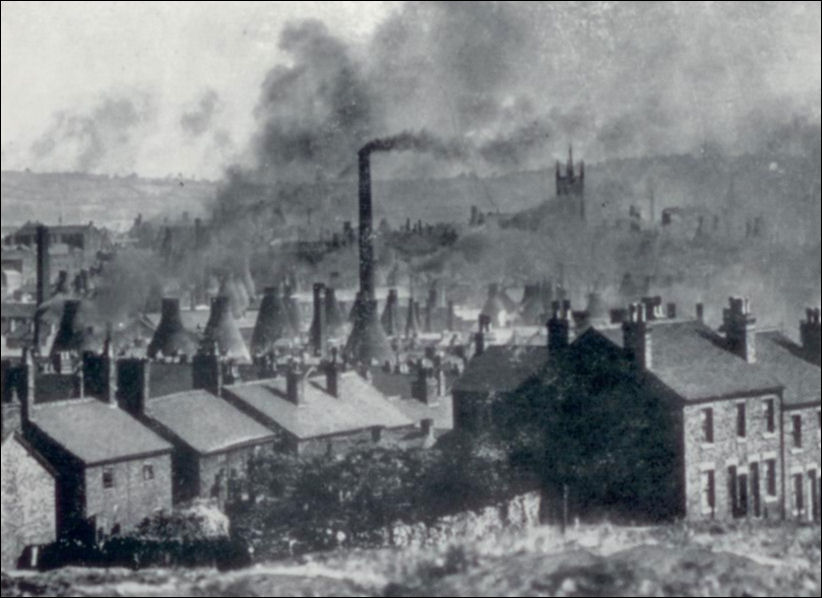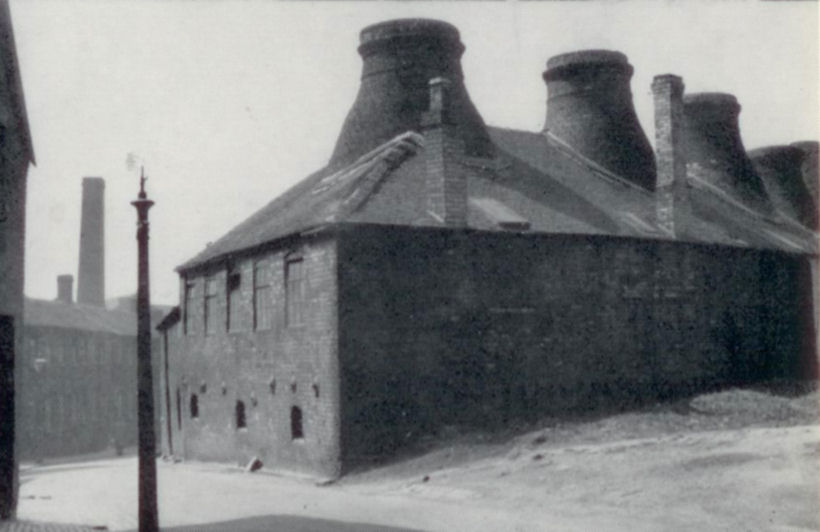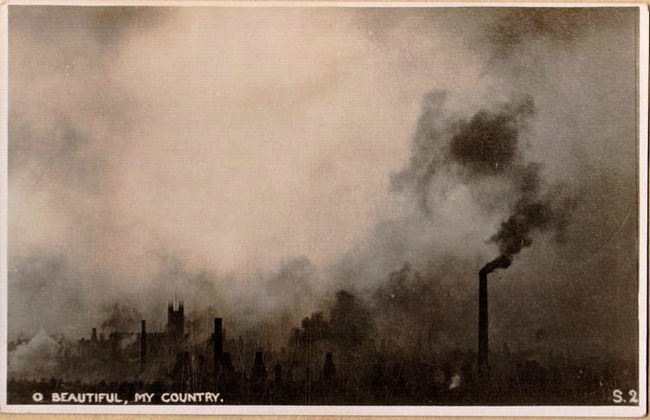![]()
|
|
|
Stoke-on-Trent - Potworks of the week |
Longton potteries - the most polluted of all the North Staffordshire pottery towns
|

Longton potteries - a photograph by A.W.J. Blake c.1895 - there are at least 65 bottle ovens in this photograph
"In
Longton there is a good supply of water from reservoirs through pipes,
"but no regulations for draining, except those by the surveyors of
highways under the general Act. There are no public scavengers. A large
proportion of the liquid refuse is thrown into the water-courses; it
either soaks into the subsoils or remains stagnant on the
surface."
Report of Local Committee - 1845 "Although one of the smallest of six chief towns of the Potteries, to which our introductory remarks especially allude, Longton is still a borough of considerable industrial and commercial importance, and boasts a population that would, in many less concentrated parts of the country, raise it to the first rank among towns. As it is, all who take an interest in the great pottery industries, will always remember that it was at Longton Hall that the earliest attempts to manufacture porcelain in this country were made. As early as 1756, a manufactory of English porcelain was established here, and ware of great lightness and beauty was produced, fully equaling that for which Chelsea was famous. Longton has from a very early date enjoyed a large amount of celebrity among the Pottery towns for the excellence of its productions in this important branch of industrial activity. But although the manufacture of china and earthenware forms the staple industry, it is by no means the only one associated with town. There are in the vicinity a considerable number of collieries and ironstone mines, which give employment to a large number of hands; and there are also breweries, maltings, and brick-making factories, all in the most flourishing condition." 1893 directory "Longton is frequently referred to as the world's centre of the cheap china trade. The better class of ware is also largely manufactured in the town, as well as earthenware, and the pits of the Florence Coal and Iron Company, Ltd., in which the Duke of Sutherland holds the controlling interest, form the chief colliery undertaking." 1907 directory |

a Longton potbank -
the ovens partly contained insde the factory building
photo: E. J. D. Warrillow

'O Beautiful,
My Country' - Longton's St. James Church to the left
| "Pot-banks,
coal yards and terraces – those were once the only buildings in
Normacot Road.
"I can remember looking out and seeing nothing but smoke that billowed 365 days a year," says Les listing off bewildering numbers of potteries that once stood between Edwardian China and St James Church just 200 yards away. ...... locations which comprised to make the thick soup that was once Longton – Cocknage, Goms Mill, Edensor, Dresden, Florence, Sandford Hill, Weston Coyney, Adderley Green – a hundred names seemingly each with its own community, each under the civic cloak of this most industrial of the Potteries’ six towns – China Town." |
|
related pages Longton - Longton was at the end of a lane which ran from Tunstall to a village at the end of the lane, hence Longton was known as Lane End, and colloquially as 'Neck End'. Normacot Road, Longton - Normacot Road was once an important thoroughfare from Normacot to Longton Town. Many of the houses and works were demolished between the 1930's and the 1970's and the opening of the A50 road in 1997 meant that the end of Normacot Road was sealed off - so now it is a road to nowhere. also see..
|